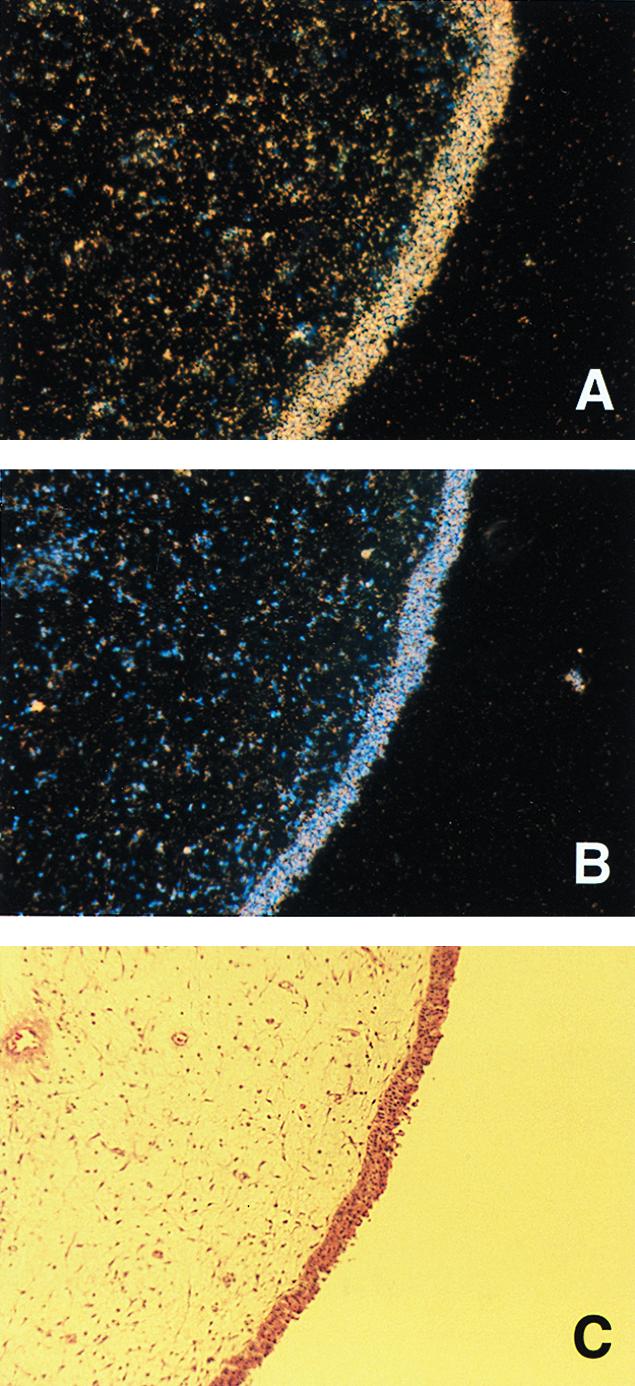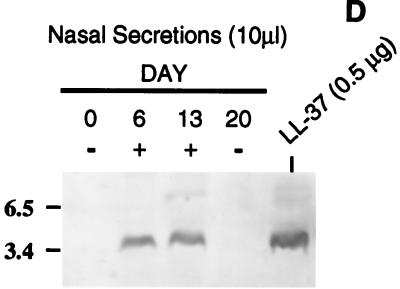FIG. 6.

In situ hybridization of LL-37/hCAP18 in a human nasal polyp. Tissue sections of the same polyp were hybridized with a [35S]UTP-labeled RNA antisense (A) or sense (B) probe. The nasal epithelial surface is visualized by the blue fluorescence of cell nuclei with the Hoechst 33258 counterstain (B) and by the dense band of staining with hematoxylin and eosin (C). Magnification, ×10. (D) Western blot showing LL-37/hCAP18 in nonpurulent nasal secretions collected from the same individual over a 3-week period. Ten microliters of solubilized nasal secretions collected on the day indicated was separated on an SDS–18% polyacrylamide gel, transferred to a membrane, and immunoblotted with an antiserum raised to LL-37/hCAP18. The control consists of 0.5 μg of chemically synthesized peptide. + and − denote whether the untreated secretions were both grossly torpid and contained >5 mg of total protein per ml. Size markers are in kilodaltons.

